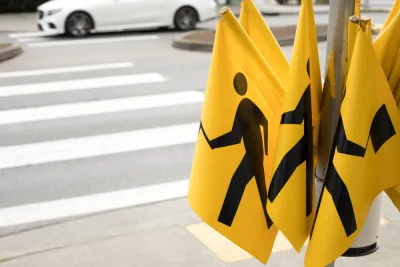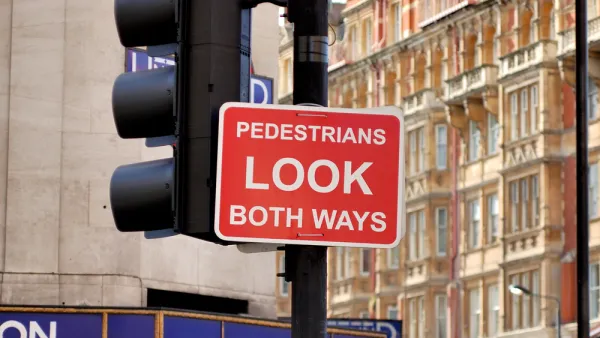One common scapegoat for rising pedestrian death rates is "distracted walking." But there is little reason to believe that smartphone-wielding pedestrians are a major cause of roadway carnage.

As I have mentioned in an earlier blog post, the number of pedestrians killed by cars and trucks in the United States has increased by 50 percent over the past decade. One common excuse for doing nothing about this problem is to blame the victim: in particular, to claim that the real problem is "distracted pedestrians." According to this theory, pedestrians are dying in large numbers because the victims are too busy looking at their phones to notice oncoming vehicles.
But this theory does not explain the growth of pedestrian fatalities, for three reasons. First, there is no evidence that deaths involving distracted walking cause a significant amount of deaths. For example, one 2014 article in Governing begins with the hysterical headline, "Too Many Pedestrians Injured By Looking At Their Phones." From that headline, you might think that thousands of pedestrians have been killed while texting. But the article itself states that the federal government attributes only half a dozen deaths to electronic devices.
Second, pedestrian injuries disproportionately affect low-income and elderly walkers, who are less likely to own smartphones. According to the Pew Research Center, only 53 percent of persons over 65, and 71 percent of persons earning under $30,000, own smartphones; by contrast, over 90 percent of persons under 29 and persons earning over $75,000 per year own smartphones. If smartphones were a major cause of the problem, younger and more affluent Americans would be more likely to be victimized by speeding cars.
Third, smartphone use is just as common in European nations as it is in the United States; smartphone use is higher in Sweden and the Netherlands than in the United States, and almost as high in France and England. According to Pew, 81 percent of U.S. adults own a smartphone, compared to 87 percent of Dutch, 86 percent of Swedes, 78 percent of Germans, 76 percent of British, and 75 percent of French. If distracted walking were such a major problem, European traffic deaths would have risen at the same time American traffic deaths have risen. But, in fact, European traffic deaths have declined by over a third over the past decade, while American traffic deaths have risen. So the link between smartphones and pedestrian crashes is at best unproven, and at worst very weak.

National Parks Layoffs Will Cause Communities to Lose Billions
Thousands of essential park workers were laid off this week, just before the busy spring break season.

Retro-silient?: America’s First “Eco-burb,” The Woodlands Turns 50
A master-planned community north of Houston offers lessons on green infrastructure and resilient design, but falls short of its founder’s lofty affordability and walkability goals.

Delivering for America Plan Will Downgrade Mail Service in at Least 49.5 Percent of Zip Codes
Republican and Democrat lawmakers criticize the plan for its disproportionate negative impact on rural communities.

Test News Post 1
This is a summary

Test News Headline 46
Test for the image on the front page.

Balancing Bombs and Butterflies: How the National Guard Protects a Rare Species
The National Guard at Fort Indiantown Gap uses GIS technology and land management strategies to balance military training with conservation efforts, ensuring the survival of the rare eastern regal fritillary butterfly.
Urban Design for Planners 1: Software Tools
This six-course series explores essential urban design concepts using open source software and equips planners with the tools they need to participate fully in the urban design process.
Planning for Universal Design
Learn the tools for implementing Universal Design in planning regulations.
EMC Planning Group, Inc.
Planetizen
Planetizen
Mpact (formerly Rail~Volution)
Great Falls Development Authority, Inc.
HUDs Office of Policy Development and Research
NYU Wagner Graduate School of Public Service






























